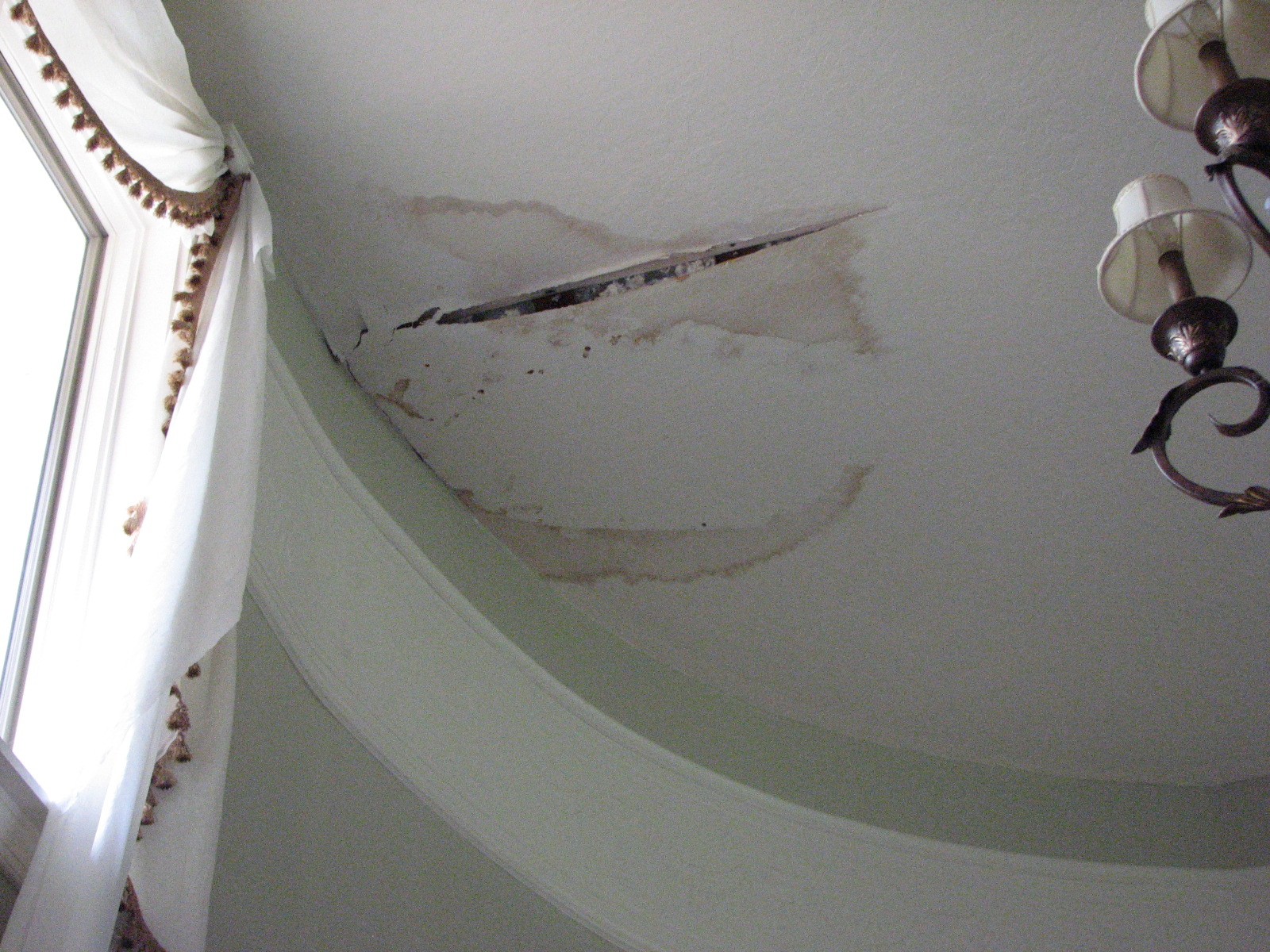For many homeowners, damp is a problem they encounter at some point. While there is a temptation to ignore the odd damp patches or those spots of mould as nothing serious, this is simply delaying the inevitable and meaning the problem will be worse when the time comes to deal with it.
There are five main reasons for damp – rising damp, lateral damp, condensation, rain penetration and water leaks. Here we look at one of these, rain penetration, to see what causes it, what it does and what homeowners can do to prevent it.
Causes of rain penetration
As well as being known as rain penetration the condition is often referred to as penetrating damp although it doesn’t define where it is penetrating from. It can occur due to any number of building defects, from the roof to the drains and be a small leak from a dripping gutter to large one from a leaking pitched or flat roof. Because of the many aspects of a building and the unpredictable English weather, they can develop leaks, either from wear or storm damage. Whatever the cause, inevitably internal damp and damage will occur.
Rain penetrating damp can appear to almost any part of a building, whereas rising damp is only associated with moisture rising from the ground level. It often tends to be more common in the higher parts of the house where the rain is most likely to hit and where there are potential weak spots such as the roof joins or missing roof tiles.
There are a number of ways that rain and other moisture can penetrate a building and lead to a damp problem including:
- Defective building materials that lead to penetrating rain including gutters that are defective or blocked, downpipes cracked or blocked, doors and windows that aren’t correctly sealed, damage to pointing, cladding, roof flashings, loose external rendering or even open chimney pots.
- Ageing, frost damaged bricks leading to porous walls and the inability to keep water out
- Spalled bricks and degraded mortar
- Air bricks are designed to allow air flow into the house but sometimes they can malfunction and allow water into the house, leading to damp
Signs of rain penetrating damp
As with other damp conditions, rain penetration does leave signs that the homeowner can spot to alert them of a problem. One of the main signs are damp patches on the walls or ceiling that increase or become darker after it has rained – this is because a fresh amount of water has penetrated the house.
Damp often spreads in circular patterns so larger circles of dampness or of watermarks can be a sure sign that moisture is getting into the house. If upper plaster is wet or is crumbling, then penetrating damp is the most likely cause. Wallpaper coming away from the wall can also indicate this kind of problem.
Signs of spores or of mildew is another sign that there is more moisture in the room than there should be and that penetrating damp may be behind the problem. If the water coming in is sufficient, there might even be drips or puddles from the weak spot.
%22%20transform%3D%22translate(1.3%201.3)%20scale(2.60547)%22%20fill-opacity%3D%22.5%22%3E%3Cellipse%20fill%3D%22%23fff%22%20rx%3D%221%22%20ry%3D%221%22%20transform%3D%22matrix(3.40627%20-88.6676%2046.43884%201.784%200%2073.6)%22%2F%3E%3Cpath%20fill%3D%22%23454545%22%20d%3D%22M258-16l-3%20222-111-49z%22%2F%3E%3Cellipse%20fill%3D%22%23b4b4b4%22%20cx%3D%22104%22%20cy%3D%2211%22%20rx%3D%2286%22%20ry%3D%2225%22%2F%3E%3Cellipse%20fill%3D%22%234a4a4a%22%20rx%3D%221%22%20ry%3D%221%22%20transform%3D%22matrix(-10.0377%2015.12373%20-51.24772%20-34.01335%20132.7%20112.5)%22%2F%3E%3C%2Fg%3E%3C%2Fsvg%3E)
Preventing rain penetrating damp
The best way to deal with damp is to stop it before it gains a foothold in your home so what are the best ways to prevent penetrating damp from the beginning?
Checking for signs of those weaknesses is something that should be done regularly. The loft can often be a point of weakness and somewhere we don’t visit that often so make a point of going up there to inspect for signs of damp and water. Also look at the areas outside the house for signs of damage by water or persistent drips when it rains.
Windows and doors all have seals to prevent water coming into the house but these can be damaged or decay over time so periodically check them to make sure they are still functioning properly. Make sure there is nothing around air bricks or damp proof courses that stop them functioning and avoid placing planters directly onto external walls.
If you replace your driveway, patio or terrace, be careful not to raise the overall level as this can bridge the damp proof course and mean it doesn’t work properly. Once or twice a year, carry out a thorough inspection to your property and look for the warning signs of building defects.
Dealing with damp
Be aware, rain penetration can cause far worse problems such as timber decay so if you spot any of the signs of damp or the kind of problems that might lead to it, you should get in touch with the right people quickly. A damp expert will be able to tell you where the damp is gaining access and can help deal with the results from the penetrating damp. This will then stop reoccurrence and keep your home free from damp and decay.


 Damp Proofing
Damp Proofing Basement Damp Proofing
Basement Damp Proofing Water Damage
Water Damage Condensation Control
Condensation Control Dry Rot Treatment
Dry Rot Treatment WOODWORM & WET ROT
WOODWORM & WET ROT CAVITY Wall Ties
CAVITY Wall Ties Property Maintenance
Property Maintenance Waterproofing And Tanking
Waterproofing And Tanking Structural Repairs
Structural Repairs








